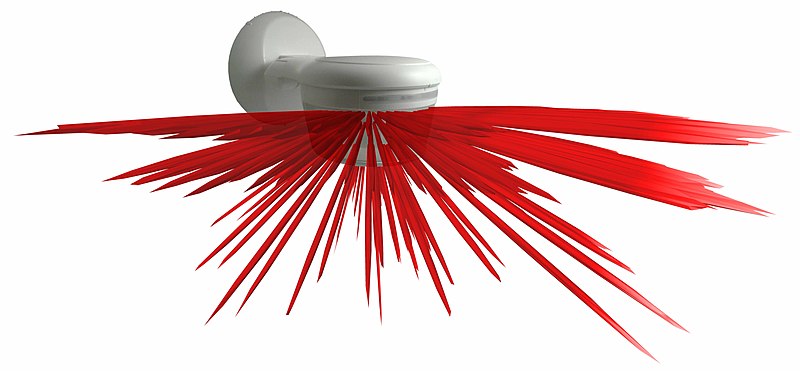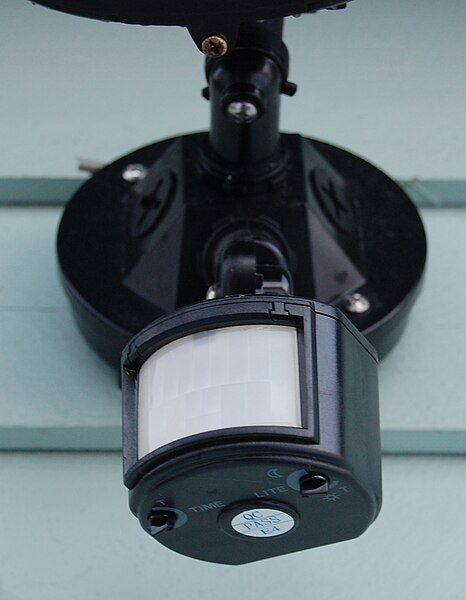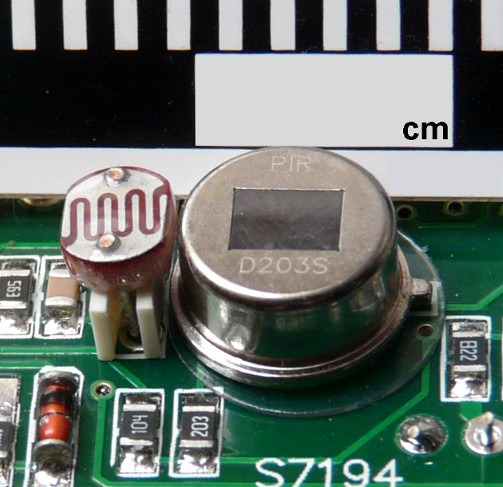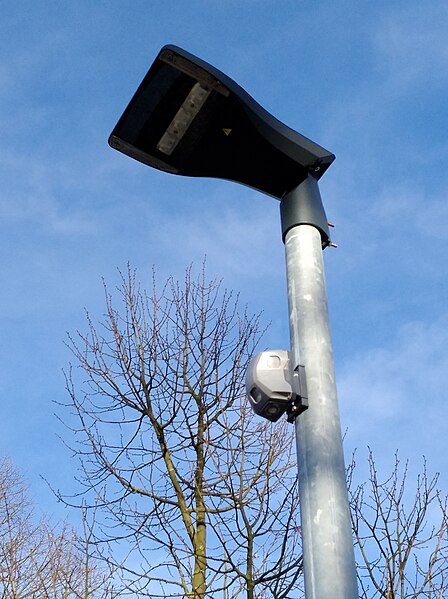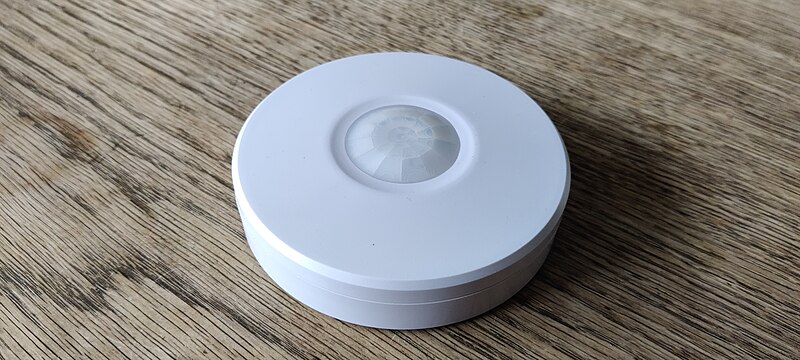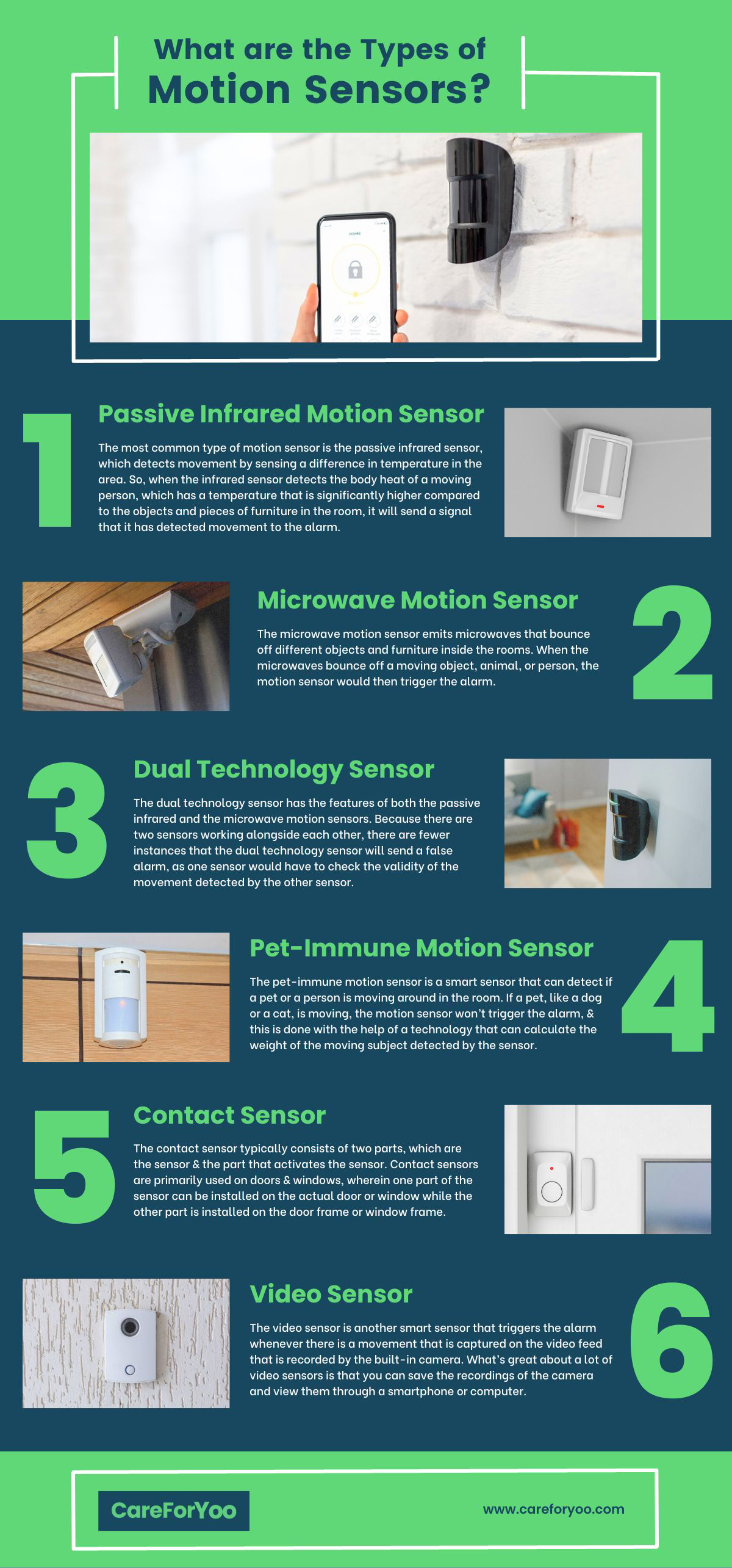In today’s world, motion sensors can be found in a wide range of gadgets and systems, including home security systems, automatic doors, and lighting controls. These clever gadgets are essential for spotting motion and launching the proper responses in response to the motion. But have you ever wondered just how these motion detectors work?
Motion sensors are fundamentally made to recognize changes in the motion or presence of an environment. They all share the objective of detecting and reacting to movement but rely on various technologies and ideas to accomplish this capability. We shall examine the underlying concepts and technologies that underlie the operation of motion sensors in this article.
We will look at some of the most widely used motion detection technologies. Each technology employs unique techniques to detect motion, enabling flexible usage in a variety of circumstances. We will also discuss sensor fusion, a method that integrates various motion-sensing technologies to improve precision and dependability.
We will also go through the fundamental ideas of motion detection, such as the idea of sensitivity settings and motion sensing range. These elements affect how well and effectively motion sensors work, ensuring that they react to detected motion while limiting false triggers.
Understanding how motion sensors function can enhance our appreciation for the technology all around us and enable us to make wise decisions about how to include or use them in our daily lives. This article will provide you with a thorough explanation of the operation of motion sensors, whether you are interested in learning more about the technology underlying your home security system or studying the developments in motion sensing technology.
So, let’s explore the mysteries of these intelligent devices. Also check out the guide to selecting motion sensors and learn how their engineering and science enable them to detect motion and improve our lives in a variety of ways.
How Does It Work?
Active ultrasonic and passive infrared (PIR) are two common motion sensor technologies, however microwave, tomographic, and dual-technology detectors also have a small market share.
Active ultrasonic motion detectors emit ultrasonic sound waves, which bounce off surrounding objects and return to the source of emission. The sensor initiates and completes the required action, whether it be turning on a light or sounding an alert, when a moving object interferes with the waves.
PIR sensors are typically utilized in home security systems’ motion-detecting cameras, lights, and sensors. These pick up the infrared radiation that both people and animals emit as heat. The home security control panel is notified, and an alert is activated if the motion sensor detects an increase in infrared energy, which indicates that someone has approached the sensor or moved within its range.
PIR sensors can be configured to ignore minute variations in infrared energy, so they will not sound an alarm if the family cat or dog passes by or if the temperature in the home slightly changes.
Other sensors employ tomographic or microwave technology, which both produce electromagnetic and microwave radiation, respectively. The sensor sounds an alarm when something or someone interferes with the radiation waves.
Dual-technology detectors are sensors that use two different motion-detecting technologies to look for movement, as their name suggests. Because both technologies must be tripped for the alarm to sound, these are somewhat more resistant to false alarms.
Types of Sensors
Passive Infrared Sensors
The electromagnetic spectrum’s infrared light, which the human eye cannot perceive, is collected by infrared sensors to perform its function. Two distinct sensors, each constructed of a unique infrared-sensitive substance, are built into the detector itself. Behind a lens, these sensors are encased in a metal housing that is hermetically sealed. The shell shields the sensors from the effects of noise, temperature, and humidity.
The ambient temperature of the area the detector is monitoring is measured by one of the two sensors. In other words, it paints a representation of how the area appears in typical circumstances. Any abrupt temperature variations in the area are picked up by the second sensor. Any discrepancy between the “seeing” of these two sensors generates a pulse that indicates “movement.”
PIR detectors are limited in their ability to detect movement and temperature changes that occur quickly enough to cause a difference between what the two sensors perceive.
Numerous of these motion detectors have segmented lenses. You can concentrate on specific parts of a space while ignoring others because of the segments. As a result, you can set up detectors to disregard particular motions or motions in particular zones.
To put it another way, segmented motion detectors will warn you of a house invasion but not if your cat wanders into the living room. This feature makes programmable motion detectors excellent additions to pet-friendly security systems.
Microwave Sensors
The second popular kind of motion detector reads a space and detects movement using microwaves. These detectors continuously emit microwaves, which strike things and return to the sensor. These objects’ reflection rates are measured by the sensor, which provides precise distance information. If anything moves, the change in the object’s rate of reflection indicates motion.
Dual Sensors
Finally, you can buy detectors that employ both PIR and microwave technology. Dual-technology sensors provide the benefit of mutual verification. Before the detector registers a movement, both sensors must first detect it. This verification process aids in avoiding false alarms.
Other Types of Motion Detectors
Other motion detectors that are less common than PIR and microwave detectors include the following:
- Ultrasonic sensors – Microwave sensors and ultrasonic sensors operate on the same fundamental principles. However, these sensors use ultrasonic sound waves rather than microwaves to bounce off of objects.
- Vibration sensors – These gadgets function by picking up the minute vibrations humans create as they move through an area.
- Tomographic sensors – A more recent type of motion detector uses tomographic sensors. Tomographic motion detectors employ several nodes dispersed over a space as opposed to a single sensor. These nodes have communication between them. The linkages become disturbed when something enters the space between them, suggesting movement. Because they do not rely on line of sight the way other sensors do, tomographic sensors can be entirely hidden. Tomographic sensors also have the benefit of being able to penetrate walls because they operate via radio waves.
- Area reflective sensors – These detectors work by detecting infrared light, just like PIR sensors. Area reflecting sensors, on the other hand, are active, much like microwave or ultrasonic detectors, whereas PIR detectors are passive and gather infrared light. Infrared light pulses are sent out, and the speed at which the light reflects off of things is measured.
Why Do I Need a Motion Sensor?
It is similar to asking if you need a home security system to inquire if you need a motion detector. There is no question that you want to keep trespassers out of your house. Security systems are needed in flats too!
Motion sensors have several applications, but their main use is as security tools. Naturally, they notify you right away if a stranger enters your home. You can ask for assistance from emergency services after they have alerted you.
Even better, you will not need to worry about your sensors at all if you have included professional monitoring in your security system. The monitoring service contacts emergency services on your behalf after receiving alerts from the motion detectors.
You will discover that motion sensors perform well when combined with other parts of a bigger home security system if you buy them for that purpose. For instance, a motion sensor can be set up to activate a light or an alarm. Flashing lights and sirens are the best deterrents for robbers. Additionally, you can program your detectors to start recording and triggering video streams so you can see exactly who is snooping around in your living room.
Choosing a Motion Sensor
Choosing one of the many motion detectors available can be challenging. Take into consideration these things while you decide:
- Security system compatibility – The best home security systems frequently come in combination with motion detectors. You will not need to worry about compatibility if you buy all of your security components at once. However, if you buy your motion detectors individually, you will want to make sure they are compatible with the rest of your system, including motion sensor lights, door sensors, video doorbells, smart locks, and home security cameras.
- Sensitivity levels – If you own a pet, your home security system may already be pet-friendly. Pet-friendly motion detectors are also something you will want. Search for detectors that can distinguish between people and animals. Most of these have settings that let you disable movement from animals that weigh a specific amount.
- Smart home integration – Search for motion detectors that are compatible with your preferred platform, whether you are building a smart home or just utilizing a smartphone. In this manner, voice commands alone can turn detectors on and off.
- Type of sensor – It is possible that some sensor types are better suited to your home’s environment. For instance, you might want to stay away from PIR detectors if your home has small rooms with numerous heating pipes. You do not want erroneous alarms going off each time the heat comes on. Additionally, if you live close to an airport, you may want to avoid vibration sensors.
- App – Your detectors should be totally under your control via a mobile app.
- Price – Depending on the features, motion detectors can cost anywhere from $30 to $50.
Installing Your Motion Sensor
It is time to install your motion detectors after you have selected the best ones for your needs.
1. Unbox your motion detector – Before installing a gadget, you should familiarize yourself with it because each one is unique. Remove the device from its package, inspect the components, and follow the installation instructions to get started.
2. Decide Where to place it – Choose the ideal locations for your detector installations. You should have the following in mind as you proceed:
- The best placement for motion detectors is across from entrance points
- If you only have a few detectors, start by strategically positioning them at the constrictions that divide your home’s major rooms
- Install detectors in the areas you believe an intruder will enter most frequently
- Think about the walls that burglars are most likely to walk along
- Because they enable a single detector to monitor a broader area, corners make excellent detector placements
- A detector’s coverage area is also increased when it is mounted high on a wall. Additionally, mounting motion detectors high up makes it harder for burglars to tamper with or steal them
- Placement of sensors over large furniture or overhangs should be avoided as they may interfere with their capacity to detect movement
- Place PIR sensors at least 10 to 15 feet away from heating vents if you are using them since vents can interfere with the sensors’ capacity to detect motion
3. Mount your detector – A motion detector is typically mounted with screws or adhesives. To mount a detector with adhesives, follow these instructions:
- Choose where to mount the detector.
- Mark the spot with a pencil.
- Peel away the adhesive protection.
- Press the adhesive to the wall.
- If the sensor is adjustable, make sure it is pointing toward the center of the area it will monitor.
To screw-mount a detector:
- Pick a place to install the detector.
- Mark the wall or ceiling where you plan to place the detector.
- Separate the detector from its base.
- Use screws and a screwdriver to attach the base to the wall or ceiling.
- Reconnect the detector to its base.
- If you can adjust the sensor, point it toward the midpoint of the monitoring area.
4. Connect it to your system – Make sure your motion detectors are functioning properly with the other parts of your security system by following the instructions that came with your device and your home security system. Make sure your security hub and mobile device can be used to turn the detectors on and off.
5. Adjust your detector’s sensitivity – Your motion detector’s sensitivity needs to be appropriately set. You will receive numerous false notifications if you don’t. Change the sensitivity by:
- Locate your detector’s sensitivity dial.
- Move this dial to a midway point between minimum and maximum.
- To test if the sensor is picking up human movement, walk through the monitoring area.
- If the detector does not detect your movement, turn the setting near the dial’s maximum position and try again.
- If the detector detects your movement, don’t change the dial.
- If you get false warnings, turn the dial to the minimum position and test the gadget again to be sure it is still detecting movement from people.
6. Maintain your sensor – To make sure your motion detector can detect intruders, keep it in good repair. To properly maintain it:
- Clean the lens – You should not have to worry about the sensor accumulating dust because it should be hermetically sealed inside of its metal housing. However, the sensor’s ability to see will be constrained by lens dust. Use a clean, dry cloth to wipe off any debris that may have accumulated on the lens every two months.
- Avoid paint – Always remove the detector before painting. Paint splatters on the lens, like dust, might prevent the detector from performing its function efficiently.
- Change the batteries – You should replace the batteries in any gadgets that use them once a year.
Motion Sensors and Room Occupancy
Measuring room occupancy is turning into a crucial necessity for many firms due to changes in working practices and rising real estate prices. The three primary types of room occupancy consequences are as follows:
- Efficient resource allocation
- Comfort for tenants and workers
- Cost savings
A business will be able to have real-time, current, and accurate information on the occupancy of such places by installing Wireless Motion Sensors at all pertinent locations.
An organization can alter its space both physically and in terms of how it is used, both in the short and long term, using this knowledge. Therefore, the advantages of possessing this information include:
- Maximizing space utilization
- Improving employee efficiency by eliminating their time wastage when looking for an available room
- Removing employee frustration about the lack of available office space or meeting rooms
- Saving costs by eliminating underused areas
Conclusion
Motion sensors’ underlying science and engineering give us a deeper grasp of how they work, and we may marvel at the intelligence and accuracy with which they identify movement and initiate the proper responses.
